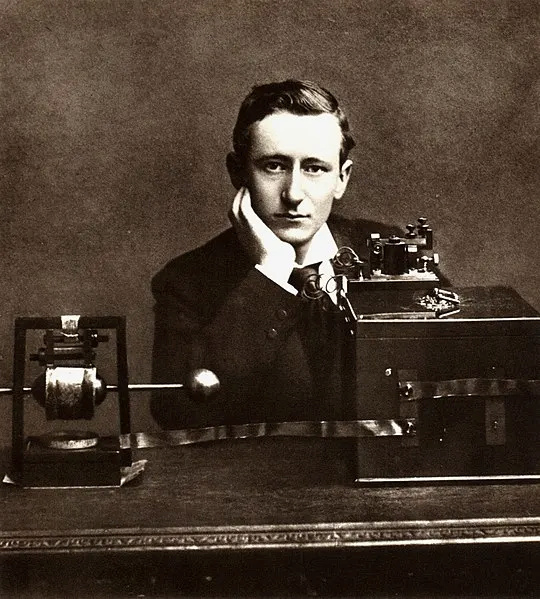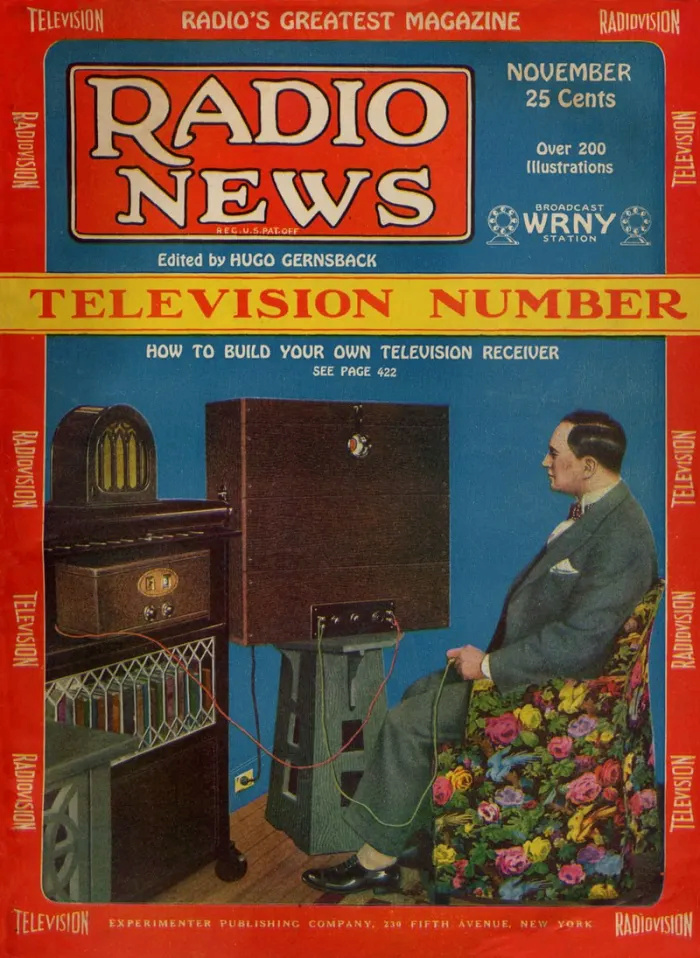A Brief History of Media
Page 1 of 1
 A Brief History of Media
A Brief History of Media

What were those ancient people trying to tell us?
Luc-Henri Fage
Where Did Media Begin?
Forty thousand years ago, some human ancestors painted on the walls of a cave on the Indonesian island of Sulawesi (see above). They left stencils of their hands and other markings.
Cave paintings in France and Spain have been dated to a couple of thousand years later. Experts don’t know exactly what purpose the artwork had, but it's suggested they might be the first examples of communicating through a medium.
The “audience” for such paintings was very small.
Wider Audience
The so-called “mass media” had to wait for the creation of new technologies before coming to life. The first of these was paper, invented in China in about 100 BCE, but communication still had to be hand written.
Another 1,500 years had to pass before Johannes Gutenberg built the first printing press. This meant that books could now be mass-produced.

Medieval book publishing
Public domain
By early in the 17th century, the first newspapers appeared but, because few people were literate, readership was limited. As more people learned to read and write the reach of mass media grew.
By the early 1800s, high circulation newspapers such as The Times of London were developing huge readerships. High-speed rotary printing presses churned out large volumes and the development of railways made for wide distribution.
The arrival of photography changed the media scene. In 1862, Matthew Brady held an exhibition of photographs he had taken of the U.S. Civil War. Shocked Americans stood and stared at Brady’s images of the dead at the Battle of Antietam.
The New York Times noted that Brady brought “home to us the terrible reality of war.” (A similar impact in the 1960s and '70s was observed when Americans saw films of the war in Vietnam being beamed into their living-room televisions).
By late in the 19th century, new technology allowed newspapers to print photographs.
In 1895, the Lumière brothers gave the first public demonstration of moving pictures in Paris. Some members of the audience were frightened.
Instant Telegraphic Contact
Samuel Morse invented his code in 1835. A series of dots and dashes could be sent down a telegraph wire and received at the other end. Messages could be sent over long distances at almost instantaneous speed. Until then, the fastest speed at which information could travel was about 55 km/h (34 mph) via railways.
(Telegraph messages were still in use in the 21st century; the last one was sent in India in July 2013.)
In 1876, Alexander Graham Bell invented the telephone. Now, instant two-way voice communication was possible.
In December 1901, the Italian inventor Guglielmo Marconi raised a radio antenna attached to a kite on Signal Hill, St. John’s, Newfoundland. He received a radio signal from Cornwall, England, 3,400 km away. Instant communication without wires or cables became a reality.
Five years later, the Canadian inventor Reginald Fessenden transmitted speech across the Atlantic.

Guglielmo Marconi
Public domain
The First Radio Stations
On November 2, 1920, radio station KDKA in Pittsburgh, Pennsylvania went on the air to report the results of that year’s presidential election. Eight years later, pictures were added to sound. W3XK was located in a Washington suburb and it broadcast television, mostly to hobbyists, for four years.

New York radio station WRNY Magazine in November 1928 carried an article on how to build your own television receiver
Public domain
However, the widespread installation of television sets in people’s homes did not happen until the late 1940s. The technology of television kept improving over the years.
Timeline of Television Technology
1948: First cable delivery system
1952: Canada got its first TV service
1953: First color broadcast but nobody had a color receiver
1962: First satellite broadcast
1965: Colour technology improvements encourage widespread use
1976: Beta home video recorders introduced
1983: High-definition television demonstrated
1998: First digital broadcasts
2005: Flat screens
2010: Three-dimensional television
2017: Organic Light Emitting Diode TVs as thin as credit cards
2023: The website en.tab-tv says, "Televisions have now reached the point of perfection."

Family gathered around the television
cmun_Project on Flickr
The Internet
The most recent media jolt came in 1965, but hardly anybody knew about it. Two computers communicated with each other in a lab at the Massachusetts Institute of Technology. The technology broke a message down into individual packages which were then reassembled at the receiving computer.
With many refinements, this became The Advanced Research Projects Agency Network (ARPANET). This was adopted as a communication system by the U.S. military in 1969. It allowed packages of information to be routed across networks using different paths. The idea was (and still is) that if one line of communication is knocked out by hostile action the system will switch to an undamaged route.
In 1974, ARPANET was adapted for use commercially. LiveScience reports that in 1976 Queen Elizabeth II hit the “send button” on her first e-mail.
Then, in 1990, along came Tim Berners-Lee and his development of Hyper Text Markup Language (HTML), a technology that allows people to navigate the internet. The following year, the World Wide Web went into action, and, by 1993, there were 600 websites and two million computers connected to the internet.
In 1998, the Google search engine was born and the way people use the internet was changed forever. In 2004, Facebook went online and the whole social networking phenomenon began.
As of March 2024:
There are 5.35 billion internet users
On average people spend 6.5 hours daily on the internet
7.5 million blog posts are published daily
There are 5.04 billion social media users on platforms such as Facebook and Instagram
There are 1.1 billion websites in the world but only 18 percent of these are active
The internet has become a mammoth information delivery system. It seems inevitable that sometime in the future a different technology will come along and make the internet obsolete.
Bonus Factoids
Charles Francis Jenkins aired the first television commercial in the late 1920s. The U.S. government fined him for doing so. Today, the average person in North America sees 20,000 television commercials a year.
According to the BBC’s Quite Interesting program, “Only 35 percent of the average person’s Twitter (now called X) followers are actual people.”
According to Pew Research, the average weekly newspaper circulation in the United States in 1984 was 63.3 million. In 2022, it was 20.9 million.
https://owlcation.com/humanities/A-Short-History-of-Media
Page 1 of 1
Permissions in this forum:
You cannot reply to topics in this forum
